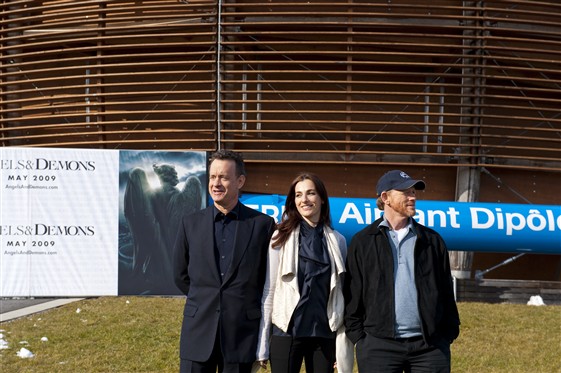From The Tao of Physics to What the Bleep Do We Know?, quantum mechanics has been a favorite target for wildly misguided cultural appropriations. That’s hardly surprising; quantum mechanics is hard, and not many physicists understand it at a deep level. The only interesting argument is whether “not many” in that sentence should be replaced by “no.”
Yesterday I stumbled across two invocations of quantum mechanics in very different contexts. First, via 3quarksdaily, historian John Lukacs muses on the centrality of our nature as human beings to our ability to apprehend and understand the world.
All of this happened during and after three-quarters of a century when physicists, inventing and dependent on more and more powerful machines, have found more and more smaller and smaller particles of matter, affixing them with all kinds of names. Until now, well into the 21st century, it is (or should be) more and more likely that not only A Basic Theory of Everything but also the smallest Basic Unit of Matter will and can never be found. Why? Because these particles are produced by scientists, human beings themselves.
Every piece of matter—just as every number—is endlessly, infinitely divisible because of the human mind. Some scientists will admit this. Others won’t.
It goes on like that at great length; it was hard to choose a representative excerpt. Basically, Lukacs is making a mistake resembling that which I accused Paul Davies of some time back — demanding that properties of as-yet-known physical theories conform to some cherished metaphysical presuppositions. In reality, the fact that scientists built the apparatuses that produce elementary particles doesn’t tell us anything at all about whether a Theory of Everything is an attainable goal. It may or may not be, but our status as conscious human beings doesn’t have anything to say about it.
And then, via Cynical-C, we find Roger Ebert reviewing Watchmen:
So let’s ask what we understand about quantum mechanics. We’ll start with me. I understand nothing.
Oh, I’ve read a lot about it. Here is what I think I know: At a basic level, the universe is composed of infinitesimal bits, I think they’re called strings, which seem to transcend our ideas about space and time. One of these bits can be in two places at once, or, if two bits are at a distance, can somehow communicate with one another. Now I have just looked it all up in Wikipedia, and find that not only don’t I understand quantum mechanics, I don’t understand the article either. So never mind. Let’s just say my notions are close to the general popular delusions about the subject, and those are what Dr. Manhattan understands.
Let’s see: despite the name “quantum,” it’s not really right to think of quantum mechanics as based on individual “bits.” But it’s true that fields resolve themselves into particles under careful observation, so that’s an excusable confusion. “Strings” have nothing to do with it, a consequence of mixing up different topics in the pop-science domain. “Somehow communicate with each other” refers to entanglement — widely-separated entangled particles don’t really communicate, but that’s certainly our fault as scientists and communicators, since we keep saying that they do.
There are two major differences between Lukacs’s discourse on quantum mechanics and Ebert’s. First, Lukacs is much more subtle, intricately weaving concepts from modern physics into a thesis concerning the role of history in human affairs. (Still completely wrong, of course.) But second and more importantly, Ebert admits he has no idea what he’s talking about, and goes to look things up on Wikipedia; Lukacs, in contrast, flaunts his misunderstanding, waving it around as proof of his erudition. Score one for the non-academics.
(And there’s no justification for scientists sneering at historians in general on this score; if I had a nickel for every time a physicist flung around concepts like “falsifiability” or “postmodernism” without knowing what was going on, I could rescue the American banking system all by myself.)
What I really found interesting was that Ebert, after giving up on Wikipedia — and rightfully so, their physics articles are uniformly useless for someone approaching the ideas as an outsider — turned next to YouTube for edification! He includes a few clips that try to say something helpful about quantum mechanics. I wonder if that’s the wave of the future. It gave me the idea of making a set of very short videos, each of which would succinctly explain one scientific idea. Making a two-minute video would take less time than writing a decent blog post. (Right?)


